-
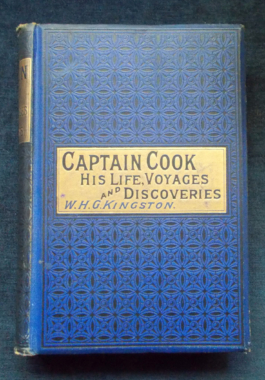 This book is not a series of fictitious adventures of the great Captain Cook, the eighteenth century navigator and explorer, but a straightforward statement of his life and achievements. It can be classed as a biography, although Cook's life can be read as a well-written book of adventures. There's extracts from Cook's logs describing, among other things, life in the South Pacific in the 18th century. An extraordinary narrative of life, trade and discovery, his success at preventative measures for scurvy and his ability to create long lasting respect from islanders, kings and chiefs from Tahiti to Hawaii.
This book is not a series of fictitious adventures of the great Captain Cook, the eighteenth century navigator and explorer, but a straightforward statement of his life and achievements. It can be classed as a biography, although Cook's life can be read as a well-written book of adventures. There's extracts from Cook's logs describing, among other things, life in the South Pacific in the 18th century. An extraordinary narrative of life, trade and discovery, his success at preventative measures for scurvy and his ability to create long lasting respect from islanders, kings and chiefs from Tahiti to Hawaii. -
Sale!
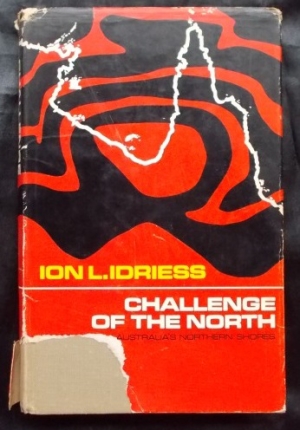
The Challenge Of The North: Ion Idriess
$95.00$80.00Houses under the Barrier Reef sea, a fish trap hundreds of miles wide across the Gulf of Carpentaria, power from our rugged, daunting Kimberley coast, sea-beef for the world's growing population...Pipe dream or reality? Dreamer - or prophet? First published in 1969, this is Idriess' lifetime of observation of the seas and shores north of Capricorn, magnified to a vision of the potential of Australia's tropical animal, plant and fish life, and of the earth's unrevealed and untapped wealth. Idriess saw the Continental Shelf as a vast reserve of food and riches that, with careful conservation, outlast the mineral rushes and exploitation of the land. He forecast what needed to be done to protect these resources and how to use them to advantage; he warned of the danger of creating a desert beneath the sea and of the devastation of the land resulting from thoughtless destruction of the Great Barrier Reef. Even as far back as 1969, Idriess saw the need for a demand for action on political, conservation and economic levels. -
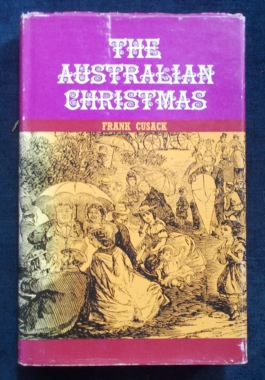 A literary Christmas Stocking of how Christmas is spent in the Land Down Under. The collection covers our early days: An entry from Banks' journal, 1769; an 1836 Christmas Day service conducted in a rush hut; Christmas letters and poems, sent to England with more than a touch of homesickness about them; Christmas Day in the Victorian goldfields of 1857; the Holy Day with the Rudds, on their selection; Melbourne's Father Christmas of 1890; an all-Australian Christmas Dinner, from cocktails to crackers in 1925...there's even a recipe for Kosciusko Christmas Cake. Contributors include luminaries such as Henry Lawson, Dymphna Cusack, Elizabeth George, Marcus Clarke, Mary Grant Bruce, Xavier Herbert, Tasma and more. Illustrated.
A literary Christmas Stocking of how Christmas is spent in the Land Down Under. The collection covers our early days: An entry from Banks' journal, 1769; an 1836 Christmas Day service conducted in a rush hut; Christmas letters and poems, sent to England with more than a touch of homesickness about them; Christmas Day in the Victorian goldfields of 1857; the Holy Day with the Rudds, on their selection; Melbourne's Father Christmas of 1890; an all-Australian Christmas Dinner, from cocktails to crackers in 1925...there's even a recipe for Kosciusko Christmas Cake. Contributors include luminaries such as Henry Lawson, Dymphna Cusack, Elizabeth George, Marcus Clarke, Mary Grant Bruce, Xavier Herbert, Tasma and more. Illustrated. -
 Simon Templar...The Saint No. IV. The lovely Sonia Delmar takes a bite of chocolate - and thereby involves Simon Templar in the most thrilling adventure of his young career. It seems that the young lady is an American munitions heiress...and the chocolate is drugged. The game is kidnapping, blackmail and international turmoil in the very vulnerable Europe of 1930. And though the Saint's allies are the stalwart Roger Conway and the powerful Sir Isaac Lessing, his adversaries are equally formidable: Rayt Marius, the 'Millionaire Without A Country', who would sacrifice the lives of millions for his own profit; Prince Rudolph who fancies himself the new Napoleon; and Vassilov, agent of the Kremlin...
Simon Templar...The Saint No. IV. The lovely Sonia Delmar takes a bite of chocolate - and thereby involves Simon Templar in the most thrilling adventure of his young career. It seems that the young lady is an American munitions heiress...and the chocolate is drugged. The game is kidnapping, blackmail and international turmoil in the very vulnerable Europe of 1930. And though the Saint's allies are the stalwart Roger Conway and the powerful Sir Isaac Lessing, his adversaries are equally formidable: Rayt Marius, the 'Millionaire Without A Country', who would sacrifice the lives of millions for his own profit; Prince Rudolph who fancies himself the new Napoleon; and Vassilov, agent of the Kremlin... -
Sale!

Joyce’s Little Maid: Nellie Cornwall
$35.00$30.00Religious Tract Society - improving stories for children. Research shows that this was published in 1936 after the author's death in 1923. -
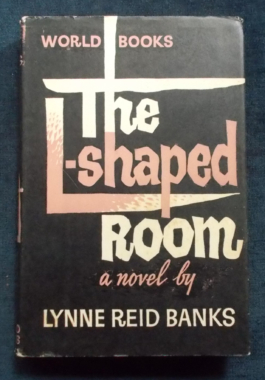
A young woman finds herself pregnant 'on the wrong side of the blanket' in 1961. The attitude to single mothers was very different then; her father kicks her out of their home and she moves into a dingy rooming house. Against her will she becomes involved with the characters who live there, some of them who are outcasts in their own way - Toby, the budding Jewish writer; John, the huge, gentle Negro musician and Mavis, the old dear living in a room stuffed full of souvenirs of a theatrical past. When she decides that she will keep her baby rather than offer him for adoption or have an abortion - highly illegal then - she begins to receive unexpected help from this odd assortment as well as her boss, an eccentric in his own right. A very well told story.
-
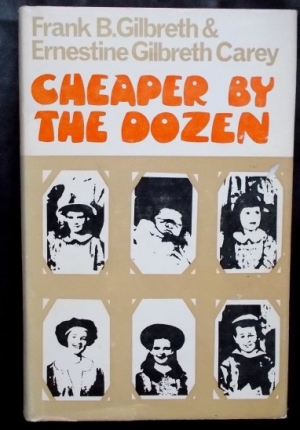 The true and unforgettable story of the Gilbreth clan as told by two of its members. In this endearing and amusing memoir, siblings Frank Jr. and Ernestine capture the hilarity and heart of growing up in an oversized family. Mother and Dad are world-renowned efficiency experts, helping factories fine-tune their assembly lines for maximum output at minimum cost. At home, the Gilbreths themselves have twelve kids and Dad can prove demonstrably - well, almost! - that efficiency principles can apply to family life as well as the workplace. Made into a film (1950) with Clifton Webb and Myrna Loy as Dad and Mum Gilbreth and remade in 2003. (See the original, it's funnier!)
The true and unforgettable story of the Gilbreth clan as told by two of its members. In this endearing and amusing memoir, siblings Frank Jr. and Ernestine capture the hilarity and heart of growing up in an oversized family. Mother and Dad are world-renowned efficiency experts, helping factories fine-tune their assembly lines for maximum output at minimum cost. At home, the Gilbreths themselves have twelve kids and Dad can prove demonstrably - well, almost! - that efficiency principles can apply to family life as well as the workplace. Made into a film (1950) with Clifton Webb and Myrna Loy as Dad and Mum Gilbreth and remade in 2003. (See the original, it's funnier!) -
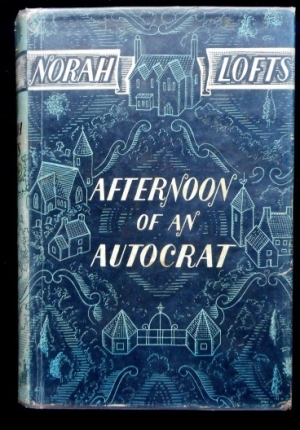 Sir Charles Augustus Shelmadine was an autocrat. He ruled his village with a firm but kindly hand - instructing his tenants on their crops, their children and their love affairs. And when he died and the new Squire came, the village stirred uneasily. For the new Squire had strange ideas - and even stranger friends - friends like Mr. Mundford who never seemed to grow any older and whose name was linked with the terrible Hell Fire Club. And Mr. Mundford was interested in too many things that should not have concerned him... like the ruins of the old Roman temple... and what happened in the village on All-Hallow's Night...and in the silent, amber-eyed young woman called Damask Greenaway.
Sir Charles Augustus Shelmadine was an autocrat. He ruled his village with a firm but kindly hand - instructing his tenants on their crops, their children and their love affairs. And when he died and the new Squire came, the village stirred uneasily. For the new Squire had strange ideas - and even stranger friends - friends like Mr. Mundford who never seemed to grow any older and whose name was linked with the terrible Hell Fire Club. And Mr. Mundford was interested in too many things that should not have concerned him... like the ruins of the old Roman temple... and what happened in the village on All-Hallow's Night...and in the silent, amber-eyed young woman called Damask Greenaway. -
 Holmes presents as an aristocratic, learned and garrulous denizen (a man of letters, of course) of a New England boarding house holds forth to fellow residents at his breakfast-table on various topics, including the advantages of old age, how to handle conversation, matters of aesthetics, religion, poetry, science, the character of America and Boston, ships, shoes and sealing wax...A presentation of Holmes' discursive rants into something approaching a novel, and therefore readable. Poet, physician, philosopher and essayist, Holmes also contributed greatly to medical research and reform. He was a member of the Fireside Poets and regarded as one of the brilliant writers of his time.
Holmes presents as an aristocratic, learned and garrulous denizen (a man of letters, of course) of a New England boarding house holds forth to fellow residents at his breakfast-table on various topics, including the advantages of old age, how to handle conversation, matters of aesthetics, religion, poetry, science, the character of America and Boston, ships, shoes and sealing wax...A presentation of Holmes' discursive rants into something approaching a novel, and therefore readable. Poet, physician, philosopher and essayist, Holmes also contributed greatly to medical research and reform. He was a member of the Fireside Poets and regarded as one of the brilliant writers of his time. -
 In some ways a sequel or successor to The Autocrat At The Breakfast-Table, there is plenty of philosophy, social critique and religious insights. Physician, poet, philosopher and essayist, Holmes also contributed much to medical reform in the 1800s. He was a member of the Fireside Poets and regarded as one of the best writers of his day. a collection of essays originally published in The Atlantic Monthly in 1857 and 1858 before being collected in book form. The essays take the form of a chiefly one-sided dialogue between the unnamed 'Author' and the other residents of a New England boarding house who are known only by their profession, location at the table or other defining characteristics. The topics discussed range from an essay on the unexpected benefits of old age to the finest place to site a dwelling and comments on the nature of conversation itself. The tone of the book is distinctly Yankee and takes a seriocomic approach to the subject matter. Each essay typically ends with a poem on the theme of the essay. There are also poems ostensibly written by the fictional disputants scattered throughout.
In some ways a sequel or successor to The Autocrat At The Breakfast-Table, there is plenty of philosophy, social critique and religious insights. Physician, poet, philosopher and essayist, Holmes also contributed much to medical reform in the 1800s. He was a member of the Fireside Poets and regarded as one of the best writers of his day. a collection of essays originally published in The Atlantic Monthly in 1857 and 1858 before being collected in book form. The essays take the form of a chiefly one-sided dialogue between the unnamed 'Author' and the other residents of a New England boarding house who are known only by their profession, location at the table or other defining characteristics. The topics discussed range from an essay on the unexpected benefits of old age to the finest place to site a dwelling and comments on the nature of conversation itself. The tone of the book is distinctly Yankee and takes a seriocomic approach to the subject matter. Each essay typically ends with a poem on the theme of the essay. There are also poems ostensibly written by the fictional disputants scattered throughout. -
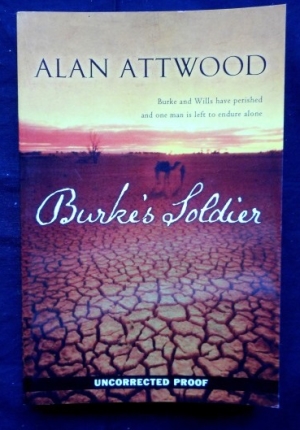
-
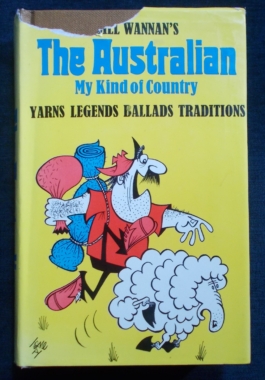 A treasury of all things Australian. Chapters include: Popular Sayings, Jests, Rhymes and Anecdotes: Game?! He's as game as Ned Kelly! No more sense than a koala bear, an' not half as good-lookin'. Or: He's as mad as a gum tree full o' galahs! Heroes and Rebels: Ben Hall and Ned Kelly, of course - and Peter Lalor, The Man With The Donkey and Les Darcy; The Yarn-Spinners: Silent Australians, Casual Australians, Bullockies, Shearers, Station Cooks, Swaggies and yet more characters but also including: Soldier Yarns, Bush Directions, Bushmen's Dogs and of course, Dad and Dave; Superstitions and Fallacies: Craig's Dream, Snake-Fallacies, The Town That Lost and more; Place Lore: Place names including - naturally - Fisher's Ghost Creek, Bread and Dripping Valley, The Never-Never and some local anomalies - The Man Who Rode The Bull Through Wagga, the Dog on the Tucker Box; The Man from Snowy River and humorous signs; Australianisms: The Larrikin, the Push, Buckley's Chance, Furphy, Wowsers, Sundowners, Bunyips, Diggers and Drongoes; Perspectives: Contemporary accounts of Convicts and Governors, The Gold Diggings, Squatters and Selectors, Immigrants, Early Trade Unionism and Republicanism and Nationalism.
A treasury of all things Australian. Chapters include: Popular Sayings, Jests, Rhymes and Anecdotes: Game?! He's as game as Ned Kelly! No more sense than a koala bear, an' not half as good-lookin'. Or: He's as mad as a gum tree full o' galahs! Heroes and Rebels: Ben Hall and Ned Kelly, of course - and Peter Lalor, The Man With The Donkey and Les Darcy; The Yarn-Spinners: Silent Australians, Casual Australians, Bullockies, Shearers, Station Cooks, Swaggies and yet more characters but also including: Soldier Yarns, Bush Directions, Bushmen's Dogs and of course, Dad and Dave; Superstitions and Fallacies: Craig's Dream, Snake-Fallacies, The Town That Lost and more; Place Lore: Place names including - naturally - Fisher's Ghost Creek, Bread and Dripping Valley, The Never-Never and some local anomalies - The Man Who Rode The Bull Through Wagga, the Dog on the Tucker Box; The Man from Snowy River and humorous signs; Australianisms: The Larrikin, the Push, Buckley's Chance, Furphy, Wowsers, Sundowners, Bunyips, Diggers and Drongoes; Perspectives: Contemporary accounts of Convicts and Governors, The Gold Diggings, Squatters and Selectors, Immigrants, Early Trade Unionism and Republicanism and Nationalism. -
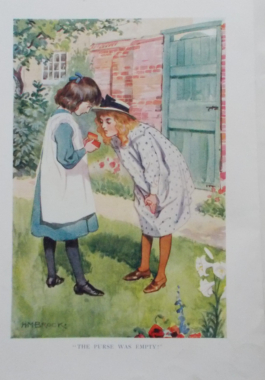

Blackie’s All-Story Book
$30.00In this volume for little ones, from a long, long time ago...Where The Rainbow Led To, Mrs Albert G. Latham; The Carol Singers, Violet Bradby; A Day's Outing, May Byron; Alfred Allgood And The Fairies, Aston Moore; Jill And Her Journey, May Byron; The Cricket Match, Jessie Pope; In The Enemy's Country, Mrs. Albert G. Latham; Jim, Alice Talwin Morris; The Lost Half-Crown, Mrs. Albert G. Latham; How To Play Croquet, Ann Marston; A Little Hero, May Byron; Betty's Plan, Gladys Davidson; Just Like Daddy, Mrs Albert G. Latham; How To Make The Best Of Things, Alice Talwin Morris; Billy The Boaster and The Mollycoddle, May Byron. With some colour and black and white illustrations done by H.M. Brock: https://en.wikipedia.org/wiki/H._M._Brock -
 It was a cloudless summer day in the year nineteen hundred. Everyone at Appleyard College for Young Ladies agreed it was just right for a picnic at Hanging Rock. After lunch, a group of four girls climbed into the blaze of the afternoon sun, pressing on through the scrub into the shadows of Hanging Rock. Further, higher, till at last they disappeared. Later, an elderly teacher was seen walking in the same direction. One girl came running back - screaming hysterically. A few days later, another girl was found, seemingly asleep and without her boots, stockings or corsets and with no memory of what had happened after she and her friends had begun to climb the rock. And two girls and a teacher were still missing...what was the truth behind this Gothic mystery? This edition illustrated with photographs and artwork of the period.
It was a cloudless summer day in the year nineteen hundred. Everyone at Appleyard College for Young Ladies agreed it was just right for a picnic at Hanging Rock. After lunch, a group of four girls climbed into the blaze of the afternoon sun, pressing on through the scrub into the shadows of Hanging Rock. Further, higher, till at last they disappeared. Later, an elderly teacher was seen walking in the same direction. One girl came running back - screaming hysterically. A few days later, another girl was found, seemingly asleep and without her boots, stockings or corsets and with no memory of what had happened after she and her friends had begun to climb the rock. And two girls and a teacher were still missing...what was the truth behind this Gothic mystery? This edition illustrated with photographs and artwork of the period. -

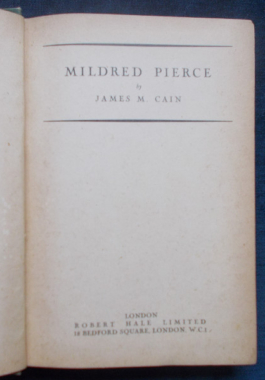 Mildred Pierce had gorgeous legs, a way with a skillet, and a bone-deep core of toughness and determination. She used those attributes to survive her husband's desertion in post-Depression America with two children and to claw her way out of poverty, becoming a successful businesswoman. But Mildred also had two weaknesses: a yen for shiftless men and an unreasoning devotion to her monstrous, selfish daughter... Made into a classic film noir starring Joan Crawford in 1945 and revisited as a miniseries in 2011 starring Kate Winslet.
Mildred Pierce had gorgeous legs, a way with a skillet, and a bone-deep core of toughness and determination. She used those attributes to survive her husband's desertion in post-Depression America with two children and to claw her way out of poverty, becoming a successful businesswoman. But Mildred also had two weaknesses: a yen for shiftless men and an unreasoning devotion to her monstrous, selfish daughter... Made into a classic film noir starring Joan Crawford in 1945 and revisited as a miniseries in 2011 starring Kate Winslet. -
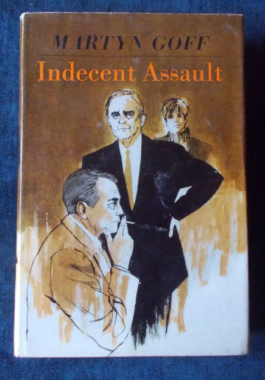 David is the art student son of the Minister for Communications. He knows his father has a chance of becoming Prime Minister but he also knows that his father's brother is a homosexual living with a flamboyant young actor. Even a touch of scandal will bring ruin. So it strikes David as odd when his battle to live away from home is successful on condition that he becomes his uncle's lodger. Set in the England of the late 1960's. The author, Martyn Goff, was one of the creators of the Booker Prize and he wrote several novels on the theme of homosexuality at a time when homosexuality in Britain was a criminal offence.
David is the art student son of the Minister for Communications. He knows his father has a chance of becoming Prime Minister but he also knows that his father's brother is a homosexual living with a flamboyant young actor. Even a touch of scandal will bring ruin. So it strikes David as odd when his battle to live away from home is successful on condition that he becomes his uncle's lodger. Set in the England of the late 1960's. The author, Martyn Goff, was one of the creators of the Booker Prize and he wrote several novels on the theme of homosexuality at a time when homosexuality in Britain was a criminal offence. -
 Mr Chipping, the new teacher at Brookfield School in 1870, finds that he must be a conventional and firm disciplinarian in the classroom to keep the boys in line. This does not make him exactly popular - but his views broaden and his pedagogical manner breaks down after he meets Katherine, a young woman, while he is on holiday. They marry and Katherine charms the Brookfield teachers, the Headmaster and quickly wins the favour of Brookfield's pupils through her kind good humour. She gives her husband the nickname of 'Chips' to the delight of the boys and she teaches Chips how to have a joke with the boys and to close his eyes to some of their minor misdemeanours. Chips' popularity soon rises and his career at Brookfield is very long - but he sees his 'boys' grow to become fine men who can meet the challenges of the sweeping world changes that occur over his long life. A simple, unforgettable and evergreen story that continues to win hearts today.
Mr Chipping, the new teacher at Brookfield School in 1870, finds that he must be a conventional and firm disciplinarian in the classroom to keep the boys in line. This does not make him exactly popular - but his views broaden and his pedagogical manner breaks down after he meets Katherine, a young woman, while he is on holiday. They marry and Katherine charms the Brookfield teachers, the Headmaster and quickly wins the favour of Brookfield's pupils through her kind good humour. She gives her husband the nickname of 'Chips' to the delight of the boys and she teaches Chips how to have a joke with the boys and to close his eyes to some of their minor misdemeanours. Chips' popularity soon rises and his career at Brookfield is very long - but he sees his 'boys' grow to become fine men who can meet the challenges of the sweeping world changes that occur over his long life. A simple, unforgettable and evergreen story that continues to win hearts today. -

The North had Rock Island - the South had Andersonville. The names of both of these prisons, during the American Civil War, struck horror into the hearts of those on both sides. The scene of human depravity is both inside and outside the stockade; death stalks life; the strong prey on the weak; humanity is redefined without redemption; indifference replaces humanity. Yet not all humanity is lost. This Pulitzer Prize-winning novel, prepared over 25 years of research and investigation and acclaimed as one of the finest Civil War stories since Gone With The Wind, does not only look at the prison camp, but at the lives of those it touched - weaving a story which is regarded as deeply disturbing, moving, grotesque, beautiful, brutal and comic. Regarded as an excellent companion book to GWTW.



